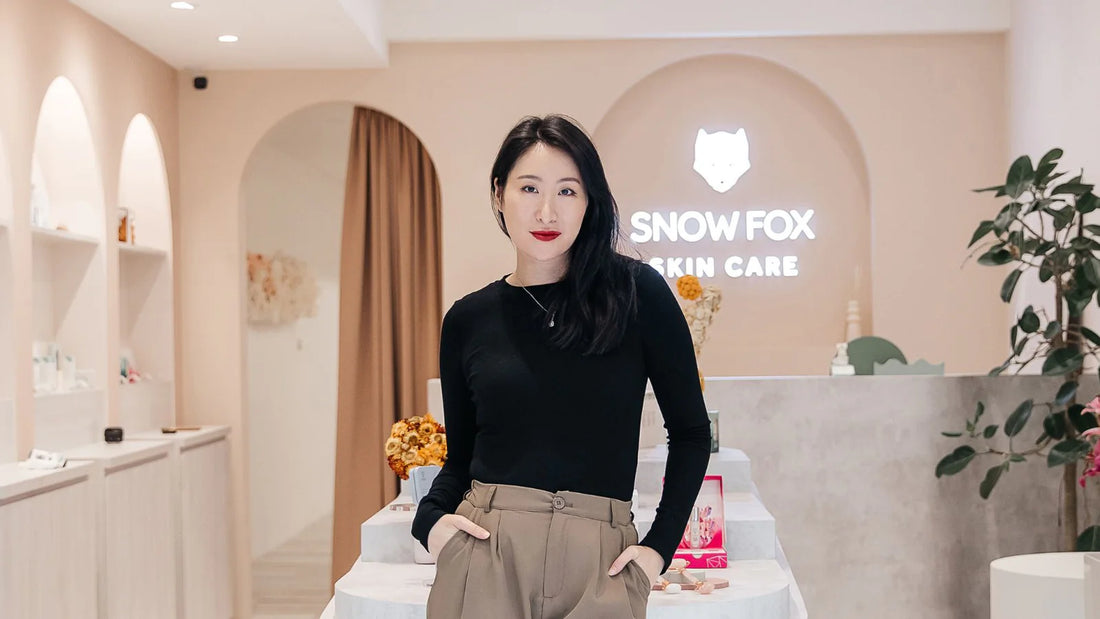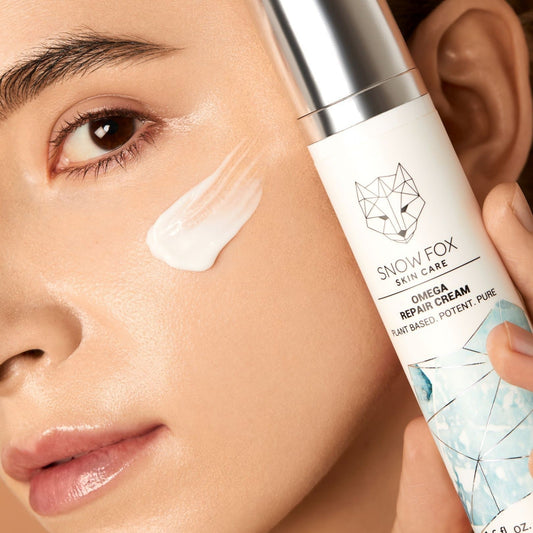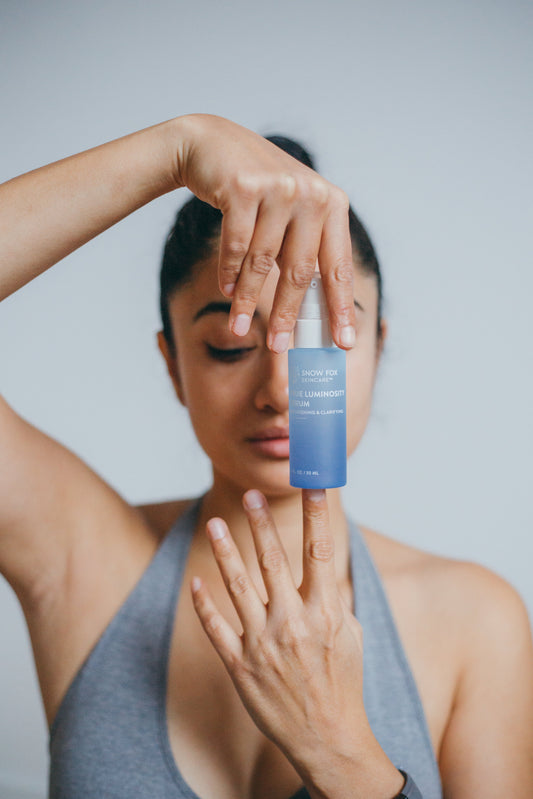Written by Phoebe Song, founder of Snow Fox Skincare
When I was officially diagnosed with Inflammatory Rosacea, I was holding back a sob. As the doctor explained that it was medically incurable and in his words: "something you'll have for life", I felt my insides lurch and the tears flowed. By this time I had tried everything - antibiotics, peels, home remedies, steroids and endless products but I still saw the same angry, scabbing red splotches across my face that even make up couldn't hide. His reaction was to comfort me by writing me a whole new blend of prescription antibiotics to "hopefully help". It was a kind gesture but a fresh batch of pills were the last thing I wanted.
A Chronic Condition
I had begun to experience bouts of depression and isolation, falling into the sad statistic of 1 in 5 Rosacea patients estimated to have depression. Even now, remembering the painful itching, the burning and flakes of skin coming off my face when I tried to touch it, gives me an uncomfortable sinking feeling.
I also remember the cruelty of strangers; hearing comments like "make up isn't going to help you" from the counter girl when I tried to find the thickest concealers to cover up the rashes, was one that stuck with me.
"What happened to you?" was another common one that would hit me if some old friends happened to bump into me during my desperate errand runs midst-flare.
I learned firsthand how hard the world can be for people with visible conditions. I was often treated like I had a contagious disease (I had people refuse to sit next to me on trains) - but looking back, I get it. Unfortunately as a very fair skin toned person, the red, swollen blotches were hideously noticeable and it was all over my face. Make up made it much worse. Things like spice and hot weather killed me, ironically a foodie who loves beaches. It ended up completely taking over my life, from my diet, habits, self-esteem to social life.
But let me go back to how it all started - I wasn't born like this. The frightening thing about Rosacea is that it can come out of the blue and suddenly you have it for life. What began as short break out flares in my teens got worse into my twenties. When I wasn't having a flare up, my skin was perfectly fine. But over time, these "breakout" periods lasted longer and got visibly worse - the redness creeped outward from my nose to eventually cover 80% of my face. My worst flare up lasted two years - this was when I finally got a diagnosis, but by then I had lost all hope of ever having skin normality again.
I was tired, lonely, depressed, dealing with acid reflux from the antibiotics and guilty about being so obsessed with the way I looked, but really, I didn't know it then - this was the beginnings of an award-winning, dermatologist approved skincare brand for all skin types, especially sensitive skin people like myself.
I am so grateful for this journey because it's also led me to doing business in a much more empathetic way; I detest airbrushed perfection in skincare ads, and insist on using skin inclusive models. This isn't a PR led story - the overcooked "she didn't have something for herself so she made this brand and fixed it" type angle, (I know it sounds like it, but I swear it's not because...I'm technically not fixed at all) - I still have Rosacea and hypersensitive skin. I can't go to the beach without ridiculous levels of sun protection anymore. I have to very careful about what make up I use and how much of it. I still can't go too far with spicy foods and some days, my skin can be a real mess; this is the reality of it all. There is no miracle cure for Rosacea, and it's OK.
I've decided to share some unappealing images of myself for only two main reasons; the first being that I've been accused of having naturally "amazing skin" and exaggerating my Rosacea issues. Flattered, but take a look at this.
Secondly, I want the beauty community to know that this is OK; it's OK to want to improve your skin conditions and it's also OK to have imperfections. Health is more important than looking cute.

Before (unedited, no makeup):
Inflammatory Rosacea (subtype II), symptoms included redness, bumps, pustules, swelling, flaking, dry patches and hypersensitivity

Above: Reaction to heat/ hot climate
Below: my skin now
Finding the Solution
So how did I start Snow Fox skincare? I was disappointed in conventional treatments that focused more on dealing with flare ups rather than avoiding triggers so I began to look for a better way of management. My goal was to prevent new flare ups from returning, rather than focusing on treating problems when they came.
This ideology behind Snow Fox being a "system of maintenance" is still core to the brand's formulations today. It took two years, an amazing Head Chemist (who is still my office wife today) and a new proprietary technology just to refine the base formula. Snow Fox was launched with just three products at the end of November 2016 in Sydney. Four months after launch, Snow Fox was rated Top 10 Best Green Beauty Brands by Marie Claire and the cult Arctic Breeze Rescue Mask sold out worldwide, with a global two month waitlist.
Now, we have entire ranges featuring multiple patents, awards and endless happy testimonials but what really truly makes me devote my entire self to this industry is seeing other Rosacea patients walk a similar path to recovery.
To those of you who follow me and send me happy msgs about your own experiences, know that I appreciate it deeply. Your stories help me through some of the toughest stages that business owners often have to deal with. For those of you new to me, feel free to reach out anytime.

Phoebe Song
IG: @phoebe.snowfox






